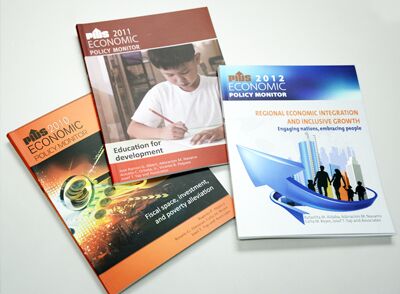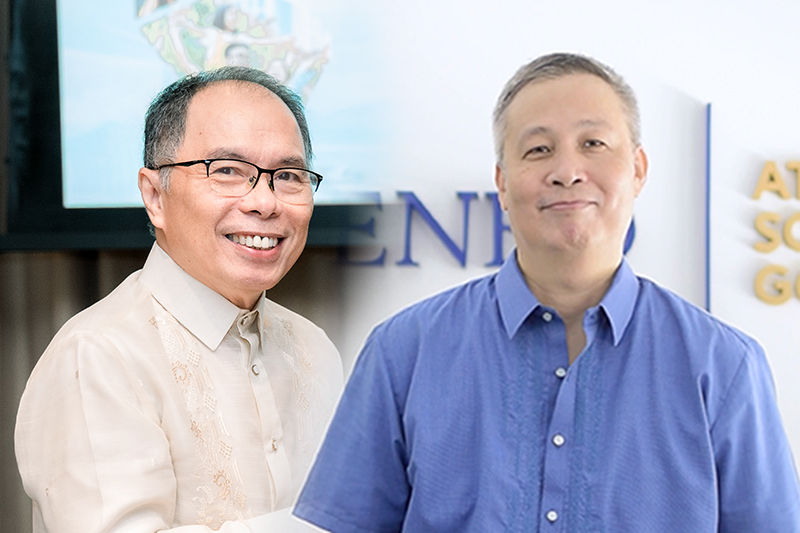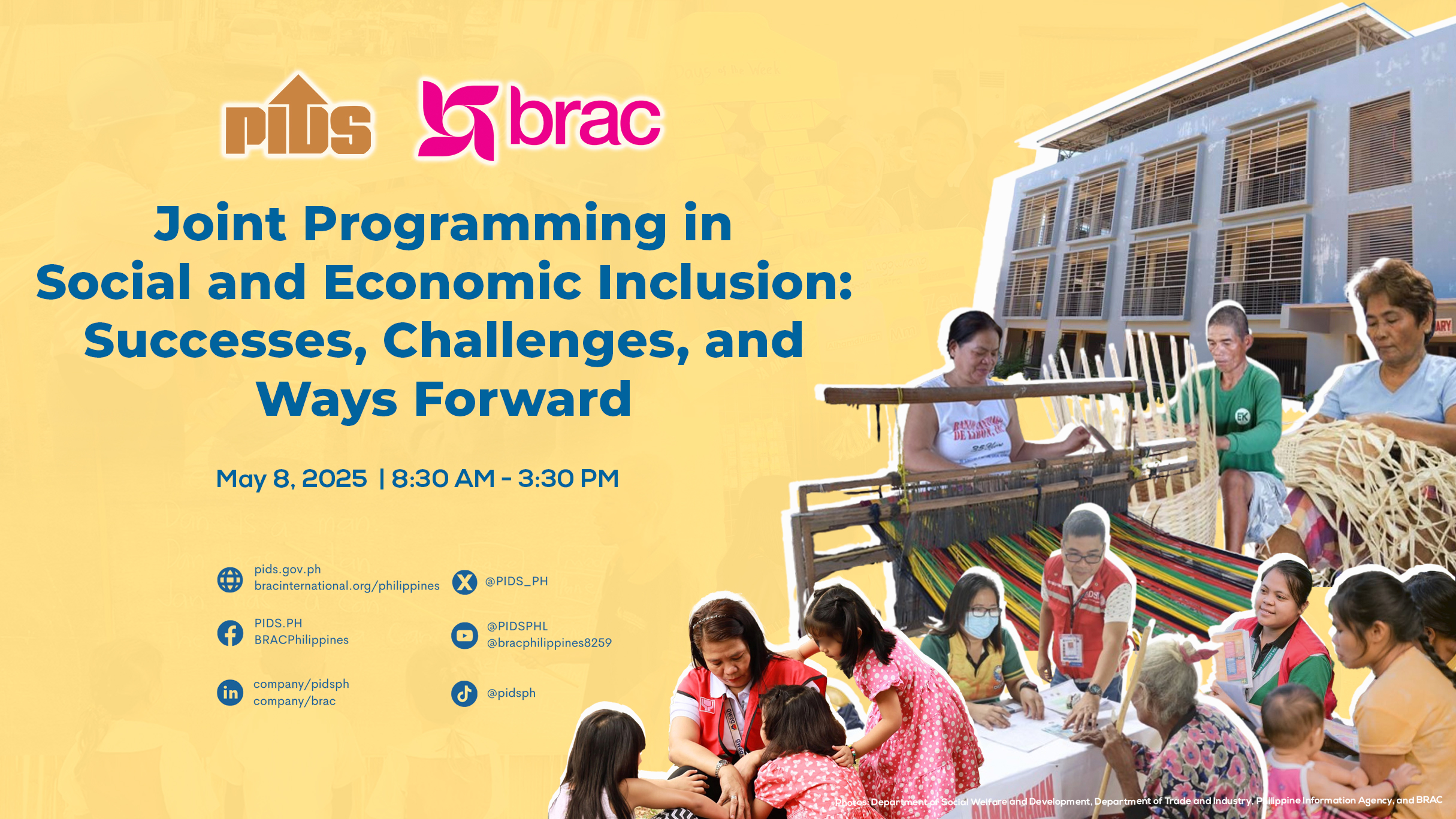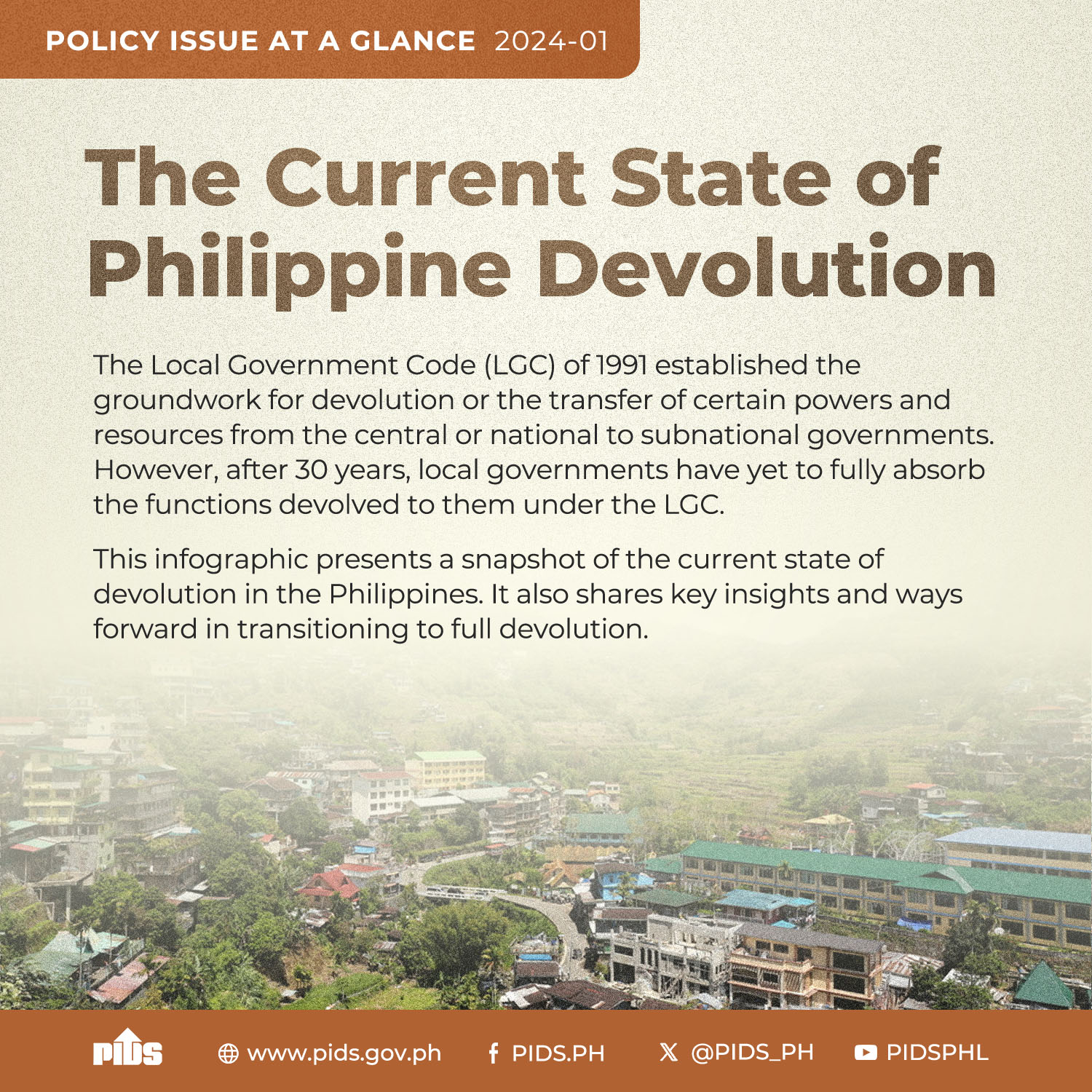
True to its mandate of conducting in-depth analyses of issues salient to development and nation-building, the Philippine Institute for Development Studies (PIDS) launched the Economic Policy Monitor (EPM) in 2011 as its new publications platform to promote evidence-based policymaking. EPM has three parts: the first one is an incisive review of global, regional, and domestic macroeconomic trends and developments in the previous year while the second one discusses policy updates in key economic sectors and analyzes their impacts. The third one, which is the major feature of the EPM, is an indepth study of an issue that critically impinges on the country’s quest for sustained and inclusive growth.
The first edition of the EPM focused on the theme Fiscal Space, Investment, and Poverty Alleviation, three related issues that must be addressed to make economic growth inclusive. With the Philippine economy growing by 7.3 percent in 2010 in terms of gross domestic product (GDP) – beyond the expectations of analysts – the challenge is to sustain the momentum and make a dent on poverty reduction.
Education for Development was the theme of the second edition of the EPM, which recognized the critical role of education for sustained, inclusive, and rapid growth of the economy. Recommendations included resolving the issue of education finance and adopting a steadier approach to reform and implementation, including instituting a culture of accountability and rewards for performance.
The third edition had the theme Regional Economic Integration and Inclusive Growth and tackled the country’s policy options amid integration efforts with economies of East Asia and key players outside the region. Data showed that poverty incidence in the Philippines was higher compared with many other East Asian economies due to the inertia of domestic manufacturing, the development of which is the key to inclusive growth through gainful livelihood for unskilled and low-skilled workers who have been left out by the booming services sector.
This year’s EPM will focus on labor sector issues that need to be addressed to ensure that economic gains are felt by the poor. Unemployment has been stable at above 7 percent. The government would do well to stay course in reviving the manufacturing sector, as relying on services alone would not make growth inclusive. The country’s prospects for 2014 are generally positive, with GDP expected to grow by 6.6 percent.
To know more about the EPM and the latest research on fiscal reforms, education, regional integration, and inclusive growth, visit the SocioEconomic Research Portal of the Philippines. Simply type ‘fiscal reforms’, ‘education’, ‘regional integration’, ‘poverty’, and related terms in the Search box.
Economic Policy Monitor 2010: Fiscal Space, Investment, and Poverty Alleviation
Economic Policy Monitor 2011: Education for Development
Economic Policy Monitor 2012: Regional Economic Integration and Inclusive Growth - Engaging Nations, Embracing People
Rationalizing National Government Subsidies for State Universities and Colleges
Financing the MDGs and Inclusive Growth in the Time of Fiscal Consolidation
Chronic and Transient Poverty
Pantawid Pamilyang Pilipino Program and School Attendance: Early Indications of Success
Assessing the Spillover Effects of FDI to the Philippines
Dynamics of Poverty in the Philippines: Distinguishing the Chronic from the Transient Poor
The first edition of the EPM focused on the theme Fiscal Space, Investment, and Poverty Alleviation, three related issues that must be addressed to make economic growth inclusive. With the Philippine economy growing by 7.3 percent in 2010 in terms of gross domestic product (GDP) – beyond the expectations of analysts – the challenge is to sustain the momentum and make a dent on poverty reduction.
Education for Development was the theme of the second edition of the EPM, which recognized the critical role of education for sustained, inclusive, and rapid growth of the economy. Recommendations included resolving the issue of education finance and adopting a steadier approach to reform and implementation, including instituting a culture of accountability and rewards for performance.
The third edition had the theme Regional Economic Integration and Inclusive Growth and tackled the country’s policy options amid integration efforts with economies of East Asia and key players outside the region. Data showed that poverty incidence in the Philippines was higher compared with many other East Asian economies due to the inertia of domestic manufacturing, the development of which is the key to inclusive growth through gainful livelihood for unskilled and low-skilled workers who have been left out by the booming services sector.
This year’s EPM will focus on labor sector issues that need to be addressed to ensure that economic gains are felt by the poor. Unemployment has been stable at above 7 percent. The government would do well to stay course in reviving the manufacturing sector, as relying on services alone would not make growth inclusive. The country’s prospects for 2014 are generally positive, with GDP expected to grow by 6.6 percent.
To know more about the EPM and the latest research on fiscal reforms, education, regional integration, and inclusive growth, visit the SocioEconomic Research Portal of the Philippines. Simply type ‘fiscal reforms’, ‘education’, ‘regional integration’, ‘poverty’, and related terms in the Search box.
Economic Policy Monitor 2010: Fiscal Space, Investment, and Poverty Alleviation
Economic Policy Monitor 2011: Education for Development
Economic Policy Monitor 2012: Regional Economic Integration and Inclusive Growth - Engaging Nations, Embracing People
Rationalizing National Government Subsidies for State Universities and Colleges
Financing the MDGs and Inclusive Growth in the Time of Fiscal Consolidation
Chronic and Transient Poverty
Pantawid Pamilyang Pilipino Program and School Attendance: Early Indications of Success
Assessing the Spillover Effects of FDI to the Philippines
Dynamics of Poverty in the Philippines: Distinguishing the Chronic from the Transient Poor












